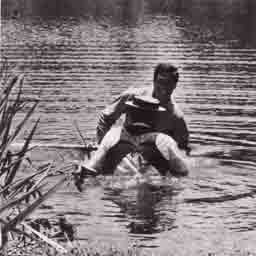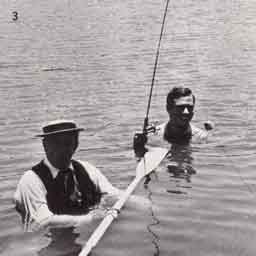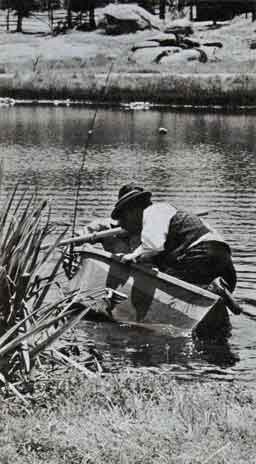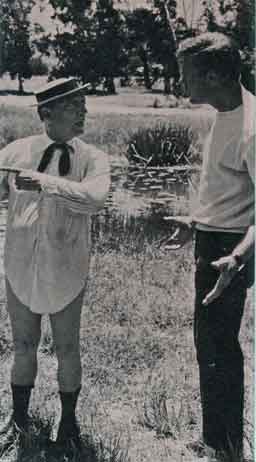

Take just three days of the hectic life on location with Route 66, for example. The time is late June. The place is California. The weather, for the first time in weeks, is great. The situation: Corvette News is on location as filming for the '62-'63 season shifts into high gear.
The opening day's events begin peacefully enough with a 2-hour drive to location through the hills of the San Fernando Valley, some 40 miles from Los Angeles. The only problem is that the second hour is spent combing a two-square-mile section of the Iverson Ranch - in the broiling sun and over some of the narrowest, meanest hand-chiseled trails ever encountered by four wheels - looking for some sign of life. After considerable back-tracking, and now in the company of a fair maiden who is also looking for the location, we find the 66 crew tucked neatly away just off the main road.

Once discovered, the day's filming proves to be a rare treat. For the first unit, it is the final day of production of an episode entitled "Journey To Nineveh," guest-starring Buster Keaton and Joe E. Brown. And one of the scenes being shot is in the classic Keaton tradition of deadpan pantomime comedy. The script calls for Buster, cast as a well-meaning but "snakebit" old man, to take George Maharis trout fishing in an undersized boat on a lake the size of a large puddle. Buster is to row out and drop anchor in 6 feet of water with a rock tied to a 3-foot length of rope. The boat, of course, fills and sinks. That's the way it is written. In order to assure that the boat will sink on cue, a wire is run from a station wagon off camera and fastened to the bow of the boat.

The way it happens the first time through is a clear-cut triumph of fate over planning. George climbs in the tiny boat; Buster pushes off with one foot, clambers aboard and the overloaded craft, without need of mechanical assistance, promptly sinks in two feet of water. The off-cue dunking, accompanied by some choice facial expressions from the principals, breaks up the entire crew. Funny as it is, all it leaves the director with is two wet actors and several hundred feet of dead film. So they dry off, change clothes and retake in another boat.
The new take works like a charm. The boat goes down on cue. Marty comes gallantly to the rescue in three feet of water. The "second sinking," as Buster calls it, with the ensuing thrashing about to "save" each other, is uproariously funny. It gets a spontaneous burst of applause from the crew. Dave Rich, the director, gets what he came for. But valuable time has been lost. The crew shoots till 9:00 p.m. to get the rest of script in the can. Following a production meeting to plan the next day, which lasts several hours, an 8:30 a.m. call is issued to begin shooting on a new episode.
The next day finds us at Norm's Landing in San Pedro, 60 miles from L. A. in the opposite direction, preparing to spend the day 2-1/2 miles out in the Pacific Ocean. The story, called "Poor Little Kangaroo Rat," involves the use of shark liver for medical research. Guest stars are Leslie Nielsen, star of The New Breed, who plays the researcher, and Maggie Pierce, who plays his assistant. As you might suspect, the story includes catching and working with live sharks. And true to the Route 66 philosophy, if the script calls for live sharks, live sharks it is.
Here's one sequence viewers will never see. (1) Buster Keaton and George Maharis
push off in a rowboat elaborately rigged to be sunk on cue. (2) Showing no respect for the script,
the hapless craft immediately sinks like a rock. (3) The irony of it all. (4) "Well, it was like
this..." Keaton explains to Martin Milner.
See the original page 24 here...





